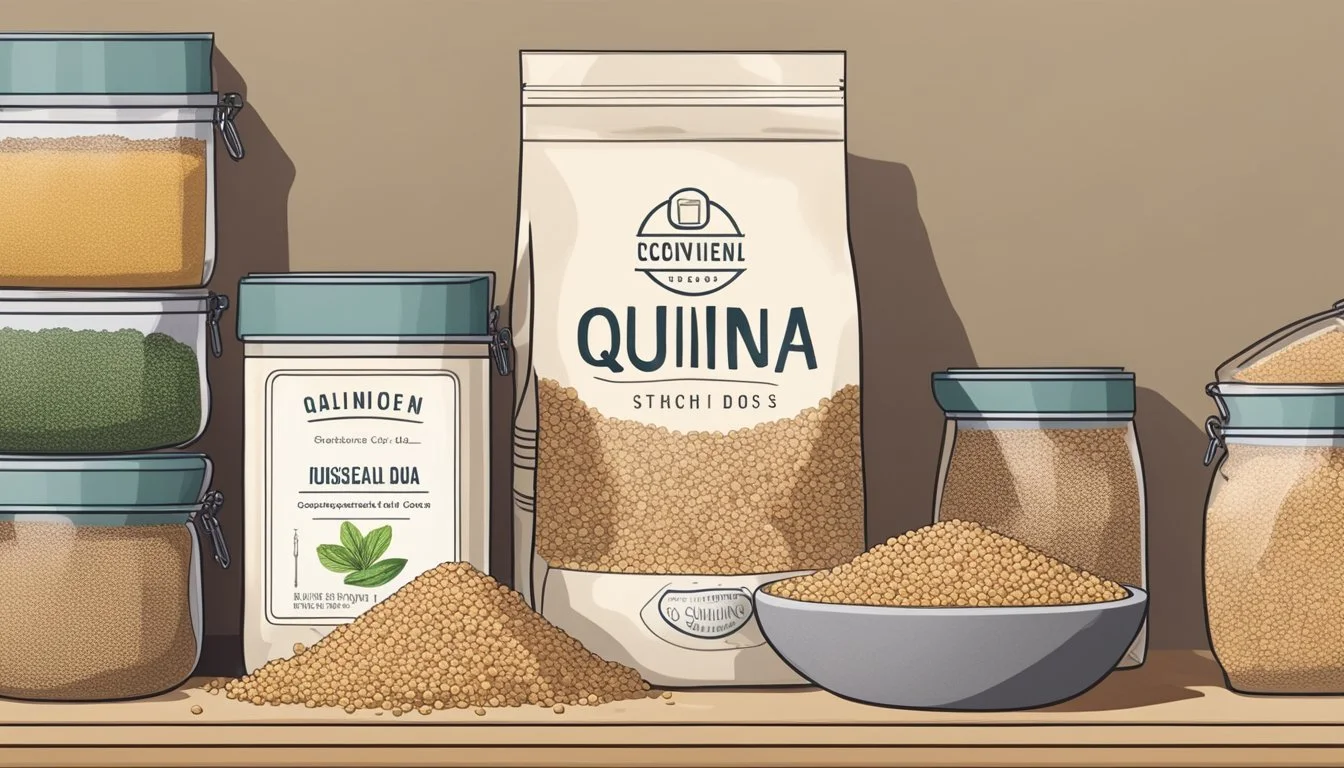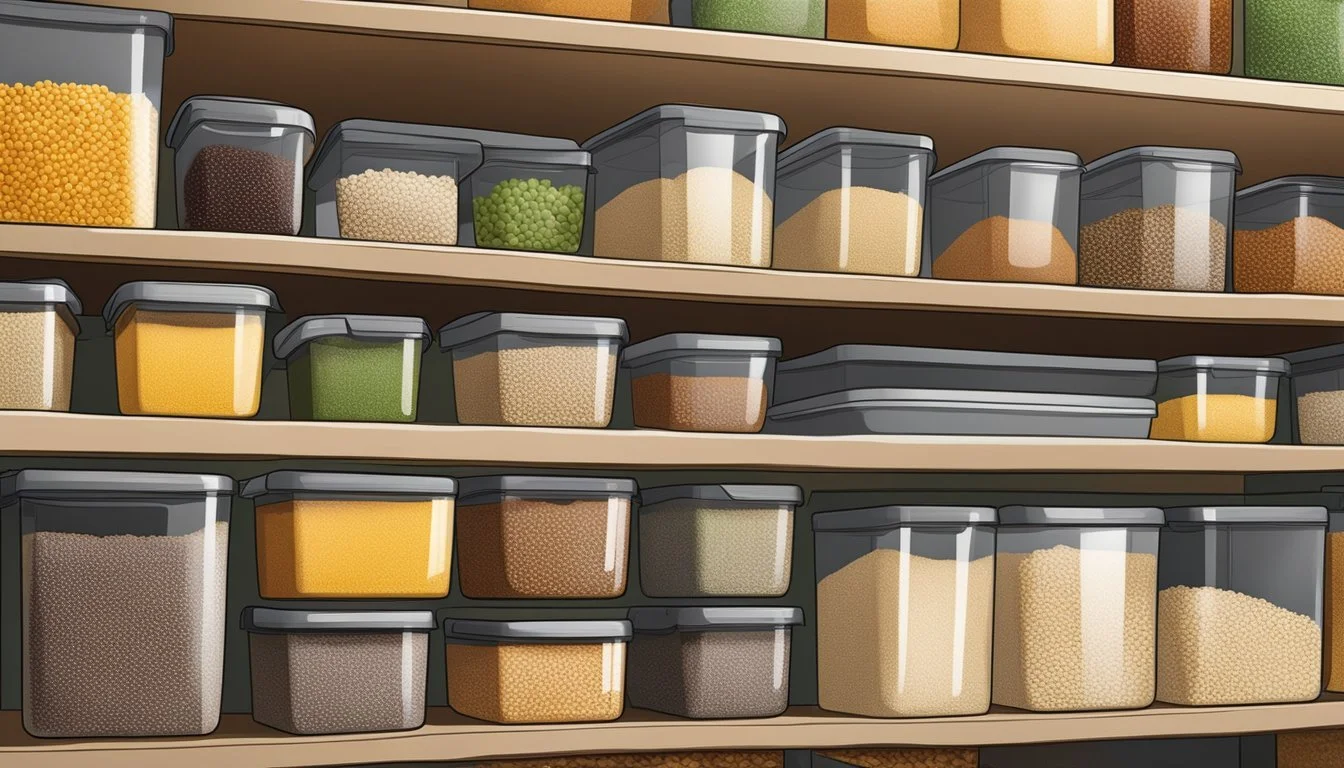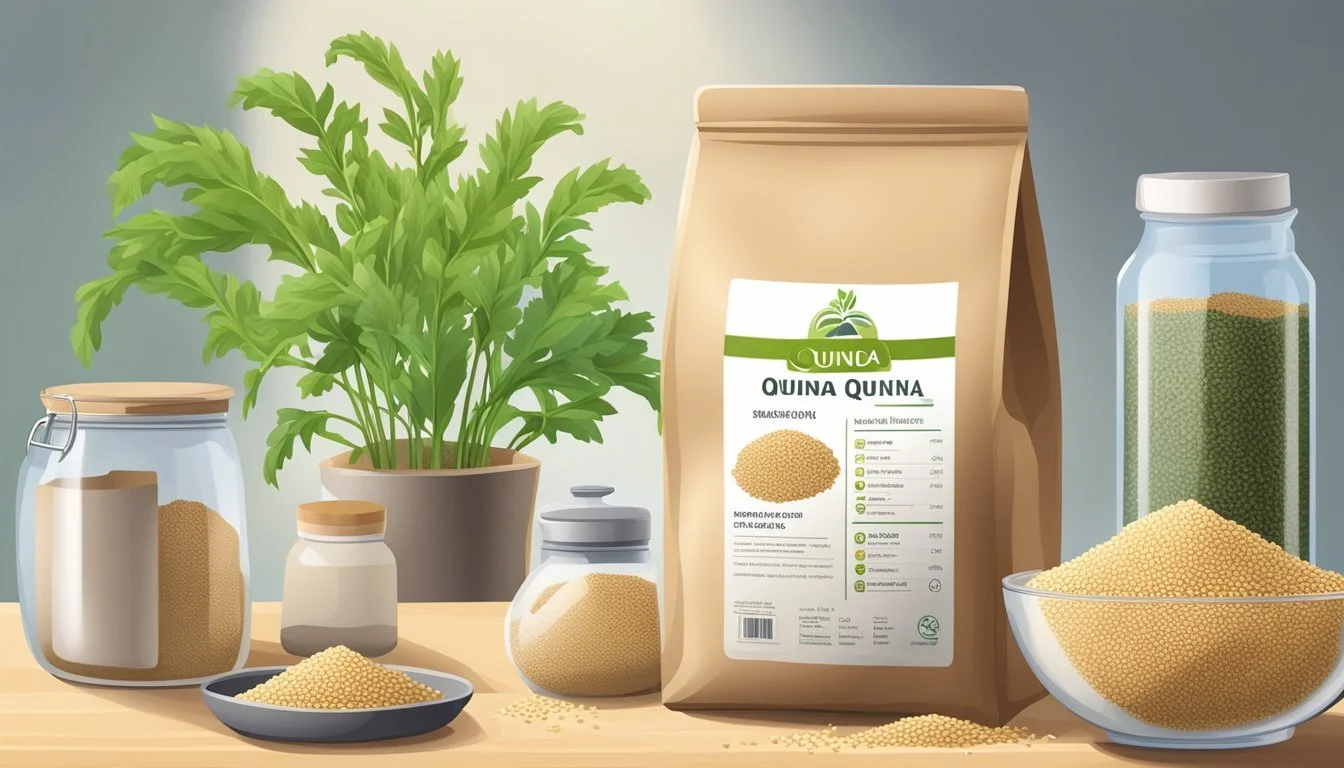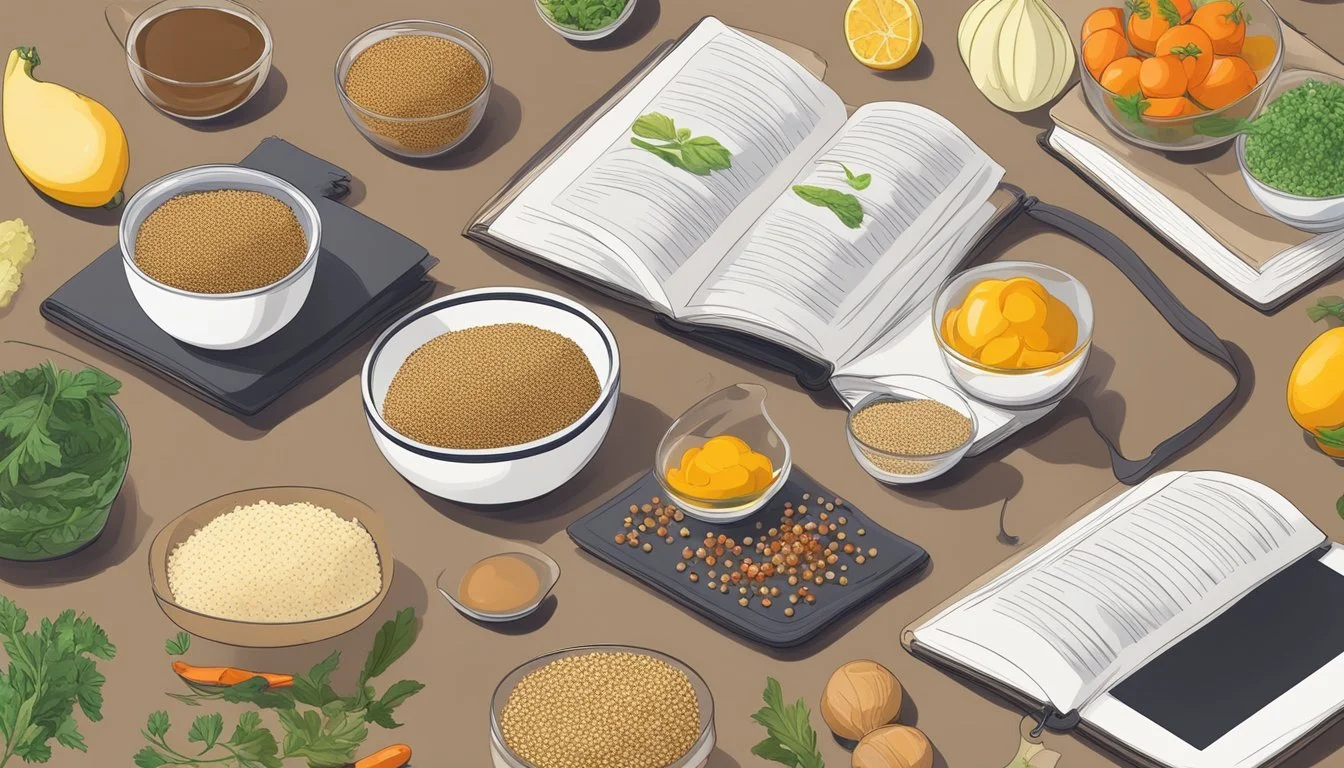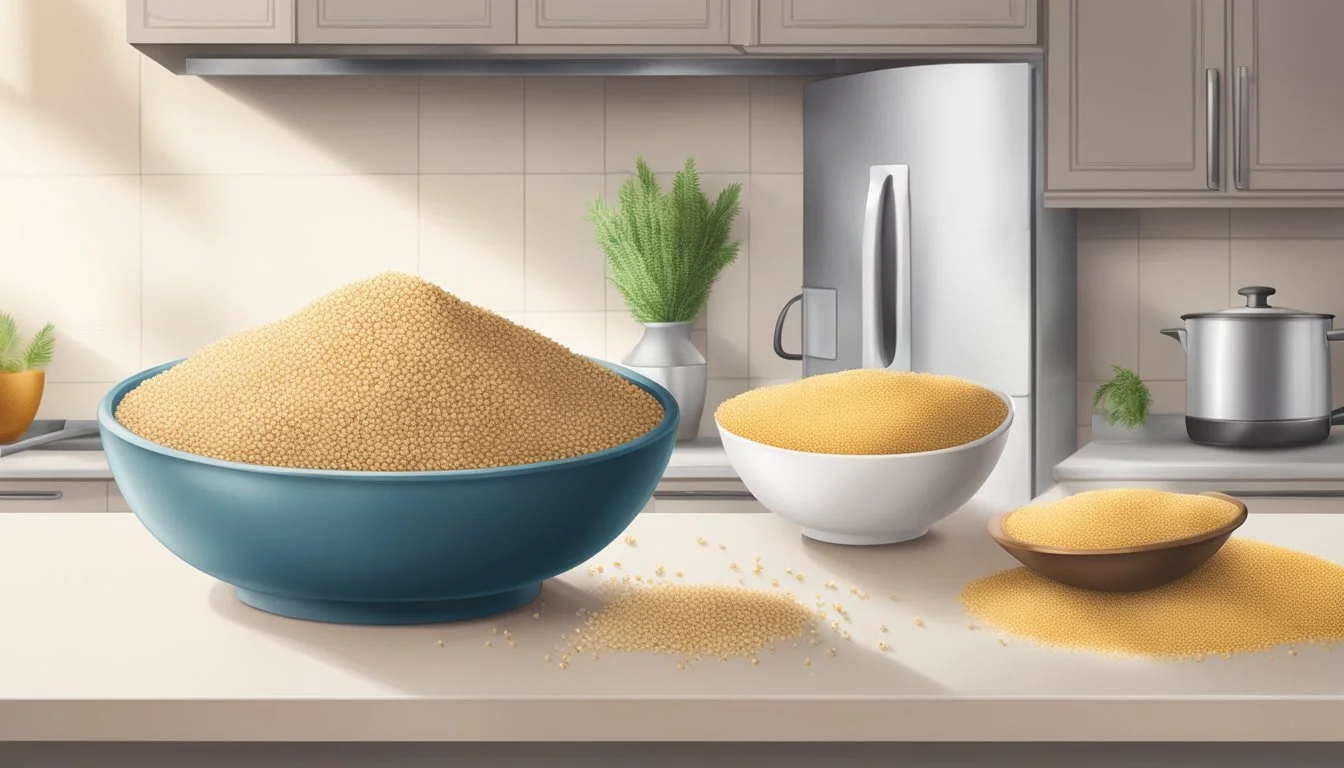Does Quinoa Go Bad?
Understanding the Shelf Life of this Superfood
Quinoa, a popular superfood lauded for its high protein content and nutritional value, is a staple in many health-conscious diets. Like all food, quinoa has a limited shelf life and will eventually go bad, but its longevity often exceeds that of other grains. Raw quinoa, when stored in a cool, dry place, can last for 2-3 years due to its natural protective coating, saponin, which deters pests and preserves freshness.
Once cooked, the shelf life of quinoa significantly decreases; it should be consumed or refrigerated within two hours of cooking to prevent the growth of harmful bacteria. In a refrigerator at a consistent temperature, cooked quinoa can maintain its quality for about 5 to 7 days. For those looking to keep cooked quinoa longer, freezing extends its edibility to between 8 to 12 months. Correct storage practices such as using airtight containers or vacuum sealing are crucial in preserving quinoa's quality and preventing spoilage.
What Is Quinoa?
Quinoa is a highly regarded seed harvested from the Chenopodium quinoa plant, often mistaken for a grain due to its cooking similarities to rice and barley. Originating from the Andean region in South America, it has been a staple food for centuries.
Nutrient-Rich: Packed with an impressive nutrient profile, quinoa is a powerhouse of vitamins and minerals. It notably includes high levels of magnesium, iron, and B-vitamins, essential for various body functions.
Protein Content: It stands out among seeds for its substantial protein content, boasting all nine essential amino acids, making it a complete protein source, which is rare for plant-based foods.
Dietary Fiber: Quinoa is rich in dietary fiber, beneficial for digestive health and may contribute to a feeling of fullness.
Gluten-Free Alternative: As a naturally gluten-free seed, it serves as an excellent food choice for individuals with gluten sensitivities or celiac disease.
Antioxidants: It contains a range of antioxidants, compounds that combat oxidative stress in the body, contributing to its superfood status.
Vegan-Friendly: Quinoa is vegan and suits various diet plans, being a versatile ingredient in salads, soups, and even desserts.
In summary, quinoa brings a full suite of essential nutrients and health benefits, easily incorporated into a well-rounded diet. Its global popularity is not only due to its health benefits but also its adaptability in many culinary applications. With the rise of healthy eating trends, quinoa's reputation continues to grow as a supportive element in maintaining a balanced diet.
Assessing Quinoa Shelf Life
When considering the shelf life of quinoa, it's essential to recognize the differences between uncooked and cooked forms, and to be aware of the signs of spoilage. The shelf life can vary greatly depending on storage conditions.
Signs of Spoilage
The first step in assessing quinoa's shelf life is to identify spoilage signs. Spoiled quinoa may exhibit:
Mold: Visual growths or discoloration suggest contamination.
Smell: An off or unpleasant smell indicates it may have gone bad.
Texture: If the grains have an unusually slimy or mushy texture, they should not be consumed.
Rancid: Quinoa, especially in the form of flour or flakes, can go rancid. A taste test, in this case, should be performed cautiously.
Shelf Life of Different Types of Quinoa
The shelf life varies with the type of quinoa and its processing:
Uncooked Quinoa:
White Quinoa: Up to 2-3 years if kept in a cool, dry place.
Red Quinoa: Similar to white quinoa, with a 2-3 year lifespan.
Black Quinoa: Also enjoys a long shelf life of around 2-3 years when stored properly.
Cooked Quinoa: Lasts for 5-7 days in the fridge in an airtight container.
Quinoa Flour and Flakes: Will generally have a shorter shelf life. Store in a cool, dry place and always seal tightly.
Understanding Expiration Dates
Quinoa packaging typically includes an expiration date, but this is often a conservative estimate:
Uncooked Quinoa: Can last up to 2-3 years past the printed expiration date.
Quinoa Products: Flours, flakes, and other processed forms should be used by the expiration date as their shelf life is less predictable.
Assessing the actual quality of the quinoa involves inspecting for spoilage, as it may still be good beyond this date if stored correctly.
Proper Storage Solutions
Proper storage of quinoa is essential to maximize its shelf life while maintaining its quality. Adherence to appropriate temperature, moisture, and light conditions can significantly extend the duration for which quinoa remains consumable.
Storing Uncooked Quinoa
Uncooked quinoa should be stored in a cool, dry, and dark place, such as a pantry. An airtight container helps preserve the quality of the quinoa by protecting it from moisture and pests. With proper storage, uncooked quinoa can last for up to 3 years.
Storing Cooked Quinoa
Once cooked, quinoa needs to be cooled before being placed in the fridge. It should be stored in a sealed container to combat moisture and other contaminants. Cooked quinoa will remain fresh in the refrigerator for 5-7 days. Reheating should be done thoroughly before consumption to ensure safety.
Freezing Quinoa
For long-term storage, freezing is an effective method. To freeze quinoa, one should ensure it is completely cool and then portion it into servings. Use airtight containers or freezer bags to minimize freezer burn and moisture exposure. When frozen properly, quinoa can last for 8-12 months. Thaw and reheat carefully before eating.
Factors Influencing Quinoa Durability
Proper storage conditions are critical for maximizing the shelf-life of quinoa and preventing it from going bad. Three key factors—environmental conditions, container selection, and contamination risks—play a major role in the durability of both uncooked and cooked quinoa.
Impact of Environmental Conditions
Environmental factors such as temperature, humidity, and light have significant effects on the longevity of quinoa. Quinoa should be stored in a cool, dark, and dry place to prevent the degradation of its natural oils that can lead to rancidity. High temperatures and exposure to direct sunlight can shorten its shelf life. The ideal storage temperature for quinoa is below 70°F (21°C), and relative humidity should be kept low.
Temperature: Keep below 70°F (21°C) for optimum preservation.
Humidity: Low humidity helps prevent mold and bacterial growth.
Light: Store in a dark place to avoid nutrient loss and spoilage.
Container Selection
The choice of storage container is essential to maintaining quinoa's freshness. Quinoa should be kept in an airtight container that is impervious to moisture and oxygen, crucial for maintaining quality and extending shelf-life, especially after opening the original packaging. For cooked quinoa, using airtight containers, vacuum-sealed bags, or heavy-duty freezer bags ensures the best protection against spoilage.
Airtight container: Keeps out moisture and oxygen, preventing spoilage.
Vacuum-sealed bags: Removes air, thus extending shelf life.
Heavy-duty freezer bags: Useful for freezing quinoa while minimizing freezer burn.
Contamination Risks
Quinoa's longevity can be compromised through contamination, which encompasses exposure to bacteria, pests, and improper food handling. Cooked quinoa is particularly prone to bacterial growth if left at room temperature for more than 2 hours. Dry or cooked quinoa should always be handled with clean utensils and stored promptly to minimize exposure to contaminants. Regular checks for signs of infestation, mold growth, and off-odors are imperative for food safety.
Hygiene: Use clean utensils and practice good hygiene to avoid introducing contaminants.
Food handling: Cool cooked quinoa quickly and store it in the refrigerator within 2 hours of cooking.
Pests and mold: Regularly inspect for any signs of infestation or mold, which indicate spoilage.
Safety Concerns and Health Risks
Quinoa's shelf life is dependent on proper storage conditions. It's imperative to understand the health risks associated with consuming expired quinoa and the preventative measures against mold and bacterial growth.
Eating Expired Quinoa
When quinoa expires, it can develop mold or rancid smells, indicators of spoilage. Consuming expired quinoa could lead to foodborne illnesses, as harmful bacteria like Salmonella or E. coli may be present. These bacteria can cause symptoms that include abdominal cramps, nausea, and vomiting. Therefore, it's crucial to adhere to expiration dates and employ sensory checks such as smelling and looking for visible mold before consumption.
Is it safe to eat expired quinoa? In general, eating expired quinoa is not recommended due to the associated health risks. Even if the expired quinoa has no visible mold or rancid odor, it may still harbor invisible bacteria, compromising food safety.
Prevention of Mold and Bacteria
Preventing mold and bacterial growth in quinoa is largely achieved through optimal storage. Quinoa should be stored in airtight containers to limit exposure to air and humidity, which can encourage mold growth. Hygiene practices are also crucial; using clean utensils and avoiding cross-contamination with other foods will help maintain the quality of the quinoa. For cooked quinoa, rapid cooling and refrigeration within two hours of cooking is essential. Here are some key storage tips:
Raw quinoa:
Store in cool, dry places away from direct sunlight.
Use airtight containers to prolong freshness.
Cooked quinoa:
Refrigerate promptly in airtight containers.
Consume within 5-7 days or freeze to extend its shelf life for up to 8-12 months.
Following these storage tips will help maintain quinoa's quality and ensure food safety.
Maximizing Quinoa Use
Quinoa's versatility allows for a variety of uses in the kitchen, from basic meal prep to more intricate cooking. This section will focus on how you can utilize quinoa to its fullest potential.
Creative Cooking with Quinoa
Quinoa is not only a versatile ingredient in its whole grain form but also as quinoa flour. This flour can be used in gluten-free baking, serving as a nutritious alternative to traditional flours. One can make quinoa flour at home by grinding the dry seeds until a fine powder is achieved.
Here's a simple table to outline a base recipe that can be adapted using quinoa:
Ingredient Quantity Preparation Quinoa 1 cup Cooked and fluffed Nuts 1/4 cup Chopped Fresh herbs To taste Finely chopped
To further enhance the nutritional value, one can integrate a variety of nuts in the recipe, adding not only texture but also essential fatty acids. Incorporating different types of quinoa—white, red, or black—can change the aesthetic and slightly vary the taste profile, making dishes visually appealing and gastronomically distinct.
Additionally, quinoa contains an impressive range of nutrients, including all nine essential amino acids, making it a complete protein source. Its high fiber content and array of vitamins and minerals contribute to a well-balanced diet.
By creatively incorporating quinoa in different culinary aspects, one maximizes its use and benefits from its nutritional value, making it a staple ingredient for health-conscious cooks.
Quinoa Storage FAQs
Understanding the proper storage and shelf life of quinoa is crucial for maintaining its quality and safety. The following sections provide detailed answers to common questions about how long quinoa lasts and optimal preservation techniques.
How Long Does Quinoa Last?
Uncooked Quinoa:
Shelf Life: Typically, uncooked quinoa can last 2-3 years if kept in a cool, dry place away from light.
Factors Influencing Longevity: Humidity, temperature, and light can affect quinoa's shelf life.
Cooked Quinoa:
Refrigerator Shelf Life: Once cooked, quinoa should be stored in the refrigerator and is best consumed within 5-7 days.
Freezer Shelf Life: For extended storage, cooked quinoa can be frozen, lasting for 8-12 months.
Best Practices for Quinoa Preservation
Proper storage methods can significantly extend quinoa's usability:
For Uncooked Quinoa:
Storage Environment: Store in a sealed, airtight container such as a Mylar bag or glass mason jar.
Location: Keep the container in a cool, dry area away from direct sunlight or heat to prevent degradation of nutrients and fats.
For Cooked Quinoa:
Cooling Before Storage: Allow cooked quinoa to cool before transferring it to an airtight container to minimize moisture buildup.
Refrigeration: Ensure the refrigerator's temperature is set consistently.
By following these storage tips, the shelf life of both uncooked and cooked quinoa can be maximized, ensuring that it remains a safe and nutritious part of your diet.
Conclusion
Quinoa, when stored properly, boasts an impressive shelf life. Uncooked quinoa can last up to 2-3 years if kept in a cool, dry place, and even beyond its expiration date if conditions are ideal. However, the longevity is contingent upon proper storage in an airtight container to prevent moisture and pests.
Once cooked, quinoa’s freshness diminishes more rapidly. It should be refrigerated within two hours of cooking, and it will remain good for about 5-7 days when stored correctly in the fridge. For those who wish to extend its usability, freezing is a practical option. Cooked quinoa frozen in airtight containers or freezer bags with excess air removed can last for up to 8-12 months.
Consumers must be cautious and observant for signs of spoilage, such as an off smell, discoloration, or mold. When these signs are apparent, the quinoa should not be consumed despite storage duration. Quinoa’s versatility and ease of storage make it a resilient staple in many diets. Just like any other food product, attention to storage is key to ensuring quinoa remains a nutritious and safe addition to meals.



